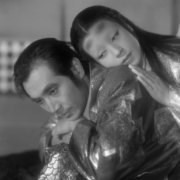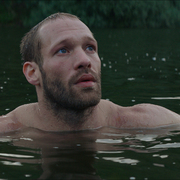Trader Joe's Silent Movie Mondays
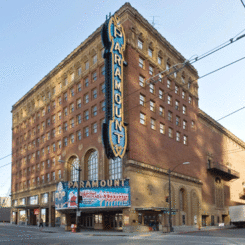
Trader Joe's Silent Movie Mondays
Silent Crime Spree
At the Paramount Theatre
Seattle Theatre Group (STG) and Northwest Film Forum (NWFF) present Trader Joe's Silent Movie Mondays this October at The Paramount Theatre in Seattle, Mondays at 7pm. This all-classic silent film series, Silent Crime Spree, is accompanied by live music from the historic Mighty Wurlitzer Organ, one of the last three remaining organs of its kind to reside in its original environment, played by critically acclaimed organist Jim Riggs.
Silent Crime Spree stars crooked cops, double-dealing mistresses, and high-tension jewel thieves - perfect crimes that go perfectly wrong! All four films, A Cottage on Dartmore (1929), Beggars of Life (1928), Underworld (1927) and Regeneration (1915), were produced before censorship and the restrictive Hays Code, showing a time when criminals were more important than the enforcers of the law.
Though the street toughs of yesteryear have largely vanished in the modern-day millionaire's playground of our big cities, these silents capture the imagination in a way that the new breed of criminal - from Wall Street execs to smalltime fund managers - never could. The films featured in Silent Crime Spree display a fascination for the mechanics and motivations of crime, with, of course, plenty of dark and devilishly handsome men and swooning ladies.
Purchase your series pass now!
Tickets: Individual film tickets are $12.00 and are available online at www.stgpresents.org, by phone at (877) 784-4849, in person at The Paramount Theatre box office, Monday through Friday 10:00am-6:00pm and The Paramount and Moore Theatre venue kiosks, 24-hours a day, 7-days a week, powered by Tickets.com. Group sales are available through STG's Group Sales Hotline at (206)315-8054. The Paramount Theatre is located at 911 Pine Street in downtown Seattle.
About The Mighty Wurlitzer Organ: The Paramount Theatre is home to the Mighty Wurlitzer Organ, one of the last three remaining organs of its kind to reside in its original environment. Installed March 1, 1928 as part of the theatre's grand opening, The Paramount's Mighty Wurlitzer is one of the most ornate organ consoles ever produced. True to the Silent Film presentation of the day, each film is accompanied by Jim Riggs on the Mighty Wurlitzer Organ to present the series as part of our rich cultural identity. STG remains committed to showcasing these rare treasures in the way they were originally shown.
About Jim Riggs: Jim Riggs is in his twentieth year as house organist at The Paramount Theatre in Oakland, California. He has previously appeared at the Grand Lake Theatre (in Oakland), Castro Theatre in San Francisco and at Stanford Theatre in Palo Alto. Having regularly appeared at every major Bay Area movie house equipped with a Mighty Wurlitzer, Riggs has entertained well over one million toe-tapping patrons and is know as the "Wizard of the Wurlitzer".
Though over one million movie patrons have been entertained by Riggs melodies on the organ, few realize he is in global demand as a silent film accompanist. From the Stanford Theater in California to the wilds of northwestern Pennsylvania to Manchester, England to Perth, Australia, Riggs has brought musical life into the silent shadows of the silver screen. He has composed and performed original scores for the films of such screen giants as Douglas Fairbanks Sr., Greta Garbo, Harold Lloyd, Lon Chaney, Buster Keaton, Gloria Swanson, Joan Crawford, Laurel & Hardy and many others.
Although Riggs appreciates the use of existing original music or light classics to provide scoring material, he prefers "...a much more creative and, for me, musically satisfying approach. I call my scores 'highly prepared improvisations.'" The key, he says, is to "...know the film very, very well. By that I mean everything from the general pacing and flow of the cinematic narrative to the length of the intertitles to where the dramatic action points are---you know, gunshots, pratfalls, quick cuts and so on." He then composes a short theme, or motif, for each major character, crafting it to reflect that character's film personality. Additionally, he says, "...there are often major---sometimes climactic---scenes which warrant their own special music. I'll compose suitable treatments for those, with an ear towards leaving room to slip in a character motif here and there." It all comes together during the performance. In his words: "There I am, sitting at the organ. My eyes are seeing images unfold on the screen, my brain's processing them, and my hands and feet are weaving together all that previously prepared material. I'm thinking about the action on screen plus I'm anticipating the action to come. And on top of it all, I'm manipulating the resources and dynamics of the organ itself. All of this happens simultaneously. The result, I think, is a completely fresh and dramatic blending of moving image and music. It's a very in-the-moment creative thing for me, almost Zen-like in nature. And it's my absolute favorite thing to do on the theatre organ."
About Puget Sound Theatre Organ Society: The Theatre Pipe Organ and its music are a truly unique American art form.Puget Sound Theatre Organ Society (PSTOS) is a non-profit organization furthering the appreciation, preservation and use of the Theatre Pipe Organs of yesteryear. Our members include musicians, technicians, and enthusiastic listeners - all devoted to the preservation and continued enjoyment of what we believe to be a national treasure.
As movies changed to "talkies" in 1929, the organs soon became unnecessary. Many were lost to fire, flood, vandalism, and neglect. Just a very few today remain in their original homes-the Seattle Paramount Wurlitzer is one of those, and as such, has genuine historical significance. For the past 45 years, it has been lovingly maintained by members of the PSTOS.
About STG: STG is the 501 (c)(3) non-profit arts organization that operates the historic Paramount and Moore Theatres in Seattle, Washington. Our mission is to make diverse performing arts and education an integral part of our region's cultural identity while keeping these two landmark venues alive and vibrant. STG presents a range of performances from Broadway, off-Broadway, dance and jazz to comedy, concerts of all genres, speakers and family shows - at both historic theatres in Seattle and venues throughout the Puget Sound and Portland, Oregon.
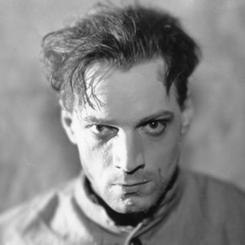
A Cottage on Dartmoor
Oct 04, 2010
(Anthony Asquith, UK, 1929, 87 min)
Hitchcock wasn't the only silent-era British director to make audiences claw their seats in suspense; Anthony Asquith, later known for classics like The Importance of Being Ernest, whips up a psycho-noir to make the Master smile.
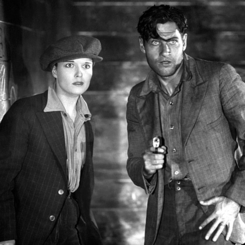
Beggars of Life
Oct 11, 2010
(William A. Wellman, USA, 1928, 100 min)
A year after picking up Hollywood's first Oscar for Wings, legendary director William Wellman turned to this rollicking saga of hobos on the lam. After killing her treacherous step-father, a girl (played here by the magnificent Louise Brooks in what was probably her finest Hollywood feature), tries to escape the country with the handsome but rag tag tramp, played by Wallace Beery.
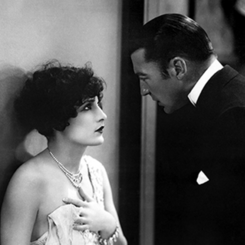
Underworld
Oct 18, 2010
(Josef von Sternberg, USA, 1927, 80 min)
Underworld was the film that launched Josef von Sternberg's very successful career. Working for the first time at a major Hollywood studio, Sternberg exploited his mastery at visual texture, conjuring extravagant effects of light and shadow with translucence and opacity, while casting a lustrous and laded halo around Feathers - the moll who is the lynchpin in a cruel love triangle with George Bancroft's mobster heavy and an alcoholic former lawyer.
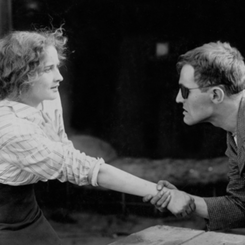
Regeneration
Oct 25, 2010
(Raoul Walsh, USA, 1915, 72 min)
Raoul Walsh's Regeneration was the first gangster film ever made, and it also belongs to a period in which the feature-length film was just coming into existence and was still in the process of discovering its own rules. Based on the autobiography of a turn-of-the-century gangster, Walsh gives us a powerful slum melodrama produced on location in the lower east side of New York City, with a gaggle of authentic low-life types performing alongside professional actors.

